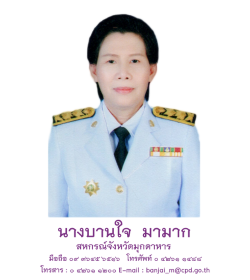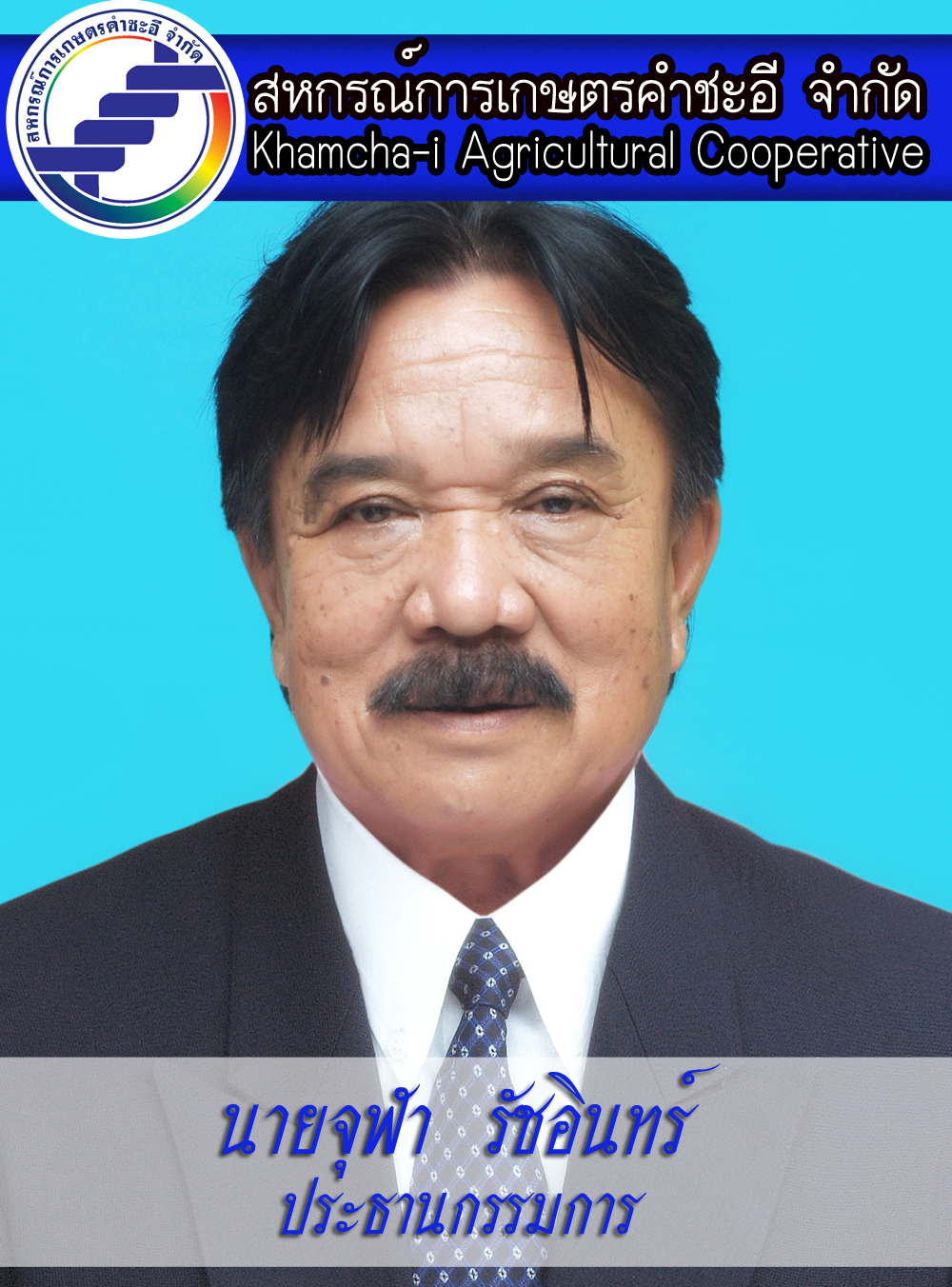×
ยินดีต้อนรับสู่ ฟอรัม Kunena!
อยากรู้จังเลยว่าคุณชอบอะไร รู้จักกับที่นี่ได้อย่างไร และสาเหตุจูงใจอะไรจึงลงทะเบียนเป็นสมาชิกกับทางเรา ช่วยแจ้งให้เราได้ทราบหน่อยได้ไหม
ยินดีต้อนรับสมาชิกใหม่ทุกท่าน และหวังว่าทางเราจะได้รับใช้คุณเยี่ยงนี้ตลอดไป
อยากรู้จังเลยว่าคุณชอบอะไร รู้จักกับที่นี่ได้อย่างไร และสาเหตุจูงใจอะไรจึงลงทะเบียนเป็นสมาชิกกับทางเรา ช่วยแจ้งให้เราได้ทราบหน่อยได้ไหม
ยินดีต้อนรับสมาชิกใหม่ทุกท่าน และหวังว่าทางเราจะได้รับใช้คุณเยี่ยงนี้ตลอดไป
kra16 cc
- PerryCex
- Topic Author
- Visitor
-

2 days 13 hours ago #2660419
by PerryCex
Replied by PerryCex on topic омг вход
How a drab Soviet metropolis became Central Asia’s capital of cool
<a href=https://omgto3.com>omg магазин
Several cities around the globe have reinvented themselves in recent years, but none more successfully than Almaty.
Since the collapse of the USSR, Kazakhstan’s largest city (population 2.2 million and growing) has evolved from a drab, run-of-the-mill Soviet metropolis into the urban star of Central Asia.
omgto3.com
omg
Along the way, the city has developed one of the world’s most beautiful metro systems, grown into a thriving banking and finance center, complemented its vintage bazaars with luxury boutiques and modern shopping malls and reshaped its traditional gastronomy into a nouvelle cuisine that’s drawing raves from foodies around the world.
Almaty is also evolving into the cultural and artistic hub of Central Asia. It’s already got several world-class museums (including a “secret” underground collection that doesn’t even have a name) and a dazzling new cultural center slated to open early next year.
“It’s an incredibly livable city,” says long-time American resident Dennis Keen, a historic preservation advocate and founder of Walking Almaty.
“Green and clean. You don’t need a car. The public transit here is fantastic. And it’s very much the center of contemporary art and dining in Central Asia.”
Keen adds that whenever he tells someone back home that he lives in Kazakhstan, “Borat” inevitably comes up. The movie’s title character doesn’t paint a very flattering portrait of the Central Asian nation. But nowadays one is tempted to think that if Borat visited Almaty now, he would say, “Very nice!”
<a href=https://omgto3.com>omg магазин
Several cities around the globe have reinvented themselves in recent years, but none more successfully than Almaty.
Since the collapse of the USSR, Kazakhstan’s largest city (population 2.2 million and growing) has evolved from a drab, run-of-the-mill Soviet metropolis into the urban star of Central Asia.
omgto3.com
omg
Along the way, the city has developed one of the world’s most beautiful metro systems, grown into a thriving banking and finance center, complemented its vintage bazaars with luxury boutiques and modern shopping malls and reshaped its traditional gastronomy into a nouvelle cuisine that’s drawing raves from foodies around the world.
Almaty is also evolving into the cultural and artistic hub of Central Asia. It’s already got several world-class museums (including a “secret” underground collection that doesn’t even have a name) and a dazzling new cultural center slated to open early next year.
“It’s an incredibly livable city,” says long-time American resident Dennis Keen, a historic preservation advocate and founder of Walking Almaty.
“Green and clean. You don’t need a car. The public transit here is fantastic. And it’s very much the center of contemporary art and dining in Central Asia.”
Keen adds that whenever he tells someone back home that he lives in Kazakhstan, “Borat” inevitably comes up. The movie’s title character doesn’t paint a very flattering portrait of the Central Asian nation. But nowadays one is tempted to think that if Borat visited Almaty now, he would say, “Very nice!”
Reply to PerryCex
- RobertBut
- Topic Author
- Visitor
-

2 days 12 hours ago #2660464
by RobertBut
Replied by RobertBut on topic omg даркнет
How a drab Soviet metropolis became Central Asia’s capital of cool
<a href=https://omgto3.com>омг зеркало
Several cities around the globe have reinvented themselves in recent years, but none more successfully than Almaty.
Since the collapse of the USSR, Kazakhstan’s largest city (population 2.2 million and growing) has evolved from a drab, run-of-the-mill Soviet metropolis into the urban star of Central Asia.
omgto3.com
omg официальный
Along the way, the city has developed one of the world’s most beautiful metro systems, grown into a thriving banking and finance center, complemented its vintage bazaars with luxury boutiques and modern shopping malls and reshaped its traditional gastronomy into a nouvelle cuisine that’s drawing raves from foodies around the world.
Almaty is also evolving into the cultural and artistic hub of Central Asia. It’s already got several world-class museums (including a “secret” underground collection that doesn’t even have a name) and a dazzling new cultural center slated to open early next year.
“It’s an incredibly livable city,” says long-time American resident Dennis Keen, a historic preservation advocate and founder of Walking Almaty.
“Green and clean. You don’t need a car. The public transit here is fantastic. And it’s very much the center of contemporary art and dining in Central Asia.”
Keen adds that whenever he tells someone back home that he lives in Kazakhstan, “Borat” inevitably comes up. The movie’s title character doesn’t paint a very flattering portrait of the Central Asian nation. But nowadays one is tempted to think that if Borat visited Almaty now, he would say, “Very nice!”
<a href=https://omgto3.com>омг зеркало
Several cities around the globe have reinvented themselves in recent years, but none more successfully than Almaty.
Since the collapse of the USSR, Kazakhstan’s largest city (population 2.2 million and growing) has evolved from a drab, run-of-the-mill Soviet metropolis into the urban star of Central Asia.
omgto3.com
omg официальный
Along the way, the city has developed one of the world’s most beautiful metro systems, grown into a thriving banking and finance center, complemented its vintage bazaars with luxury boutiques and modern shopping malls and reshaped its traditional gastronomy into a nouvelle cuisine that’s drawing raves from foodies around the world.
Almaty is also evolving into the cultural and artistic hub of Central Asia. It’s already got several world-class museums (including a “secret” underground collection that doesn’t even have a name) and a dazzling new cultural center slated to open early next year.
“It’s an incredibly livable city,” says long-time American resident Dennis Keen, a historic preservation advocate and founder of Walking Almaty.
“Green and clean. You don’t need a car. The public transit here is fantastic. And it’s very much the center of contemporary art and dining in Central Asia.”
Keen adds that whenever he tells someone back home that he lives in Kazakhstan, “Borat” inevitably comes up. The movie’s title character doesn’t paint a very flattering portrait of the Central Asian nation. But nowadays one is tempted to think that if Borat visited Almaty now, he would say, “Very nice!”
Reply to RobertBut
- RichardBAT
- Topic Author
- Visitor
-

2 days 12 hours ago #2660465
by RichardBAT
Replied by RichardBAT on topic omg тор браузер
Why this small city is the ‘eyeglasses capital’ of Japan
<a href=https://omgto3.com>omg зеркало
Japan is famed for its skilled artisans, masters who maintain a commitment to tradition while modernizing production techniques in line with the development of new materials and processes.
Many places in the country have grown famous by focusing on specific crafts, from exquisite kimonos to perfectly designed knives. Among them is the small city of Sabae, in Fukui prefecture, about a 3.5-hour train ride from Tokyo.
omgto3.com
омг вход
It’s widely known as Japan’s eyeglasses capital – and for good reason. Sabae produces over 90% of the frames manufactured in the country, according to the local government. Signs and objects shaped like eyeglasses can be found on city streets, and there’s even a museum and festival devoted to spectacles.
The art of making spectacles
Sabae, located on Japan’s main Honshu island near the city of Fukui, has been producing quality eyewear for more than a century.
It all started in 1905, when a local government official invited skilled eyeglasses artisans to come to the city to teach their craft, an attempt to create new opportunities for local farmers.
The move paid off. Today, Sabae has over 100 companies that collaborate to make pairs of glasses.
Though these studios use cutting-edge machinery to produce new frames made of metal and acetate, most stages still require the skilled hands and trained eyes of Sabae’s master artisans.
That includes Takeshi Yamae, a frame designer with Japanese brand Boston Club who has lived in the city for 17 years. He tells CNN one pair of glasses can involve more than 200 steps.
“I first design it, sketch it, then put it into my computer,” he says. “From the time I start designing, to the time I have the perfect product, it takes more than a year.”
<a href=https://omgto3.com>omg зеркало
Japan is famed for its skilled artisans, masters who maintain a commitment to tradition while modernizing production techniques in line with the development of new materials and processes.
Many places in the country have grown famous by focusing on specific crafts, from exquisite kimonos to perfectly designed knives. Among them is the small city of Sabae, in Fukui prefecture, about a 3.5-hour train ride from Tokyo.
omgto3.com
омг вход
It’s widely known as Japan’s eyeglasses capital – and for good reason. Sabae produces over 90% of the frames manufactured in the country, according to the local government. Signs and objects shaped like eyeglasses can be found on city streets, and there’s even a museum and festival devoted to spectacles.
The art of making spectacles
Sabae, located on Japan’s main Honshu island near the city of Fukui, has been producing quality eyewear for more than a century.
It all started in 1905, when a local government official invited skilled eyeglasses artisans to come to the city to teach their craft, an attempt to create new opportunities for local farmers.
The move paid off. Today, Sabae has over 100 companies that collaborate to make pairs of glasses.
Though these studios use cutting-edge machinery to produce new frames made of metal and acetate, most stages still require the skilled hands and trained eyes of Sabae’s master artisans.
That includes Takeshi Yamae, a frame designer with Japanese brand Boston Club who has lived in the city for 17 years. He tells CNN one pair of glasses can involve more than 200 steps.
“I first design it, sketch it, then put it into my computer,” he says. “From the time I start designing, to the time I have the perfect product, it takes more than a year.”
Reply to RichardBAT
- RobertUnomb
- Topic Author
- Visitor
-

2 days 11 hours ago #2660524
by RobertUnomb
Replied by RobertUnomb on topic omg зеркало
How a drab Soviet metropolis became Central Asia’s capital of cool
<a href=https://omgto3.com>omg магазин
Several cities around the globe have reinvented themselves in recent years, but none more successfully than Almaty.
Since the collapse of the USSR, Kazakhstan’s largest city (population 2.2 million and growing) has evolved from a drab, run-of-the-mill Soviet metropolis into the urban star of Central Asia.
omgto3.com
omg
Along the way, the city has developed one of the world’s most beautiful metro systems, grown into a thriving banking and finance center, complemented its vintage bazaars with luxury boutiques and modern shopping malls and reshaped its traditional gastronomy into a nouvelle cuisine that’s drawing raves from foodies around the world.
Almaty is also evolving into the cultural and artistic hub of Central Asia. It’s already got several world-class museums (including a “secret” underground collection that doesn’t even have a name) and a dazzling new cultural center slated to open early next year.
“It’s an incredibly livable city,” says long-time American resident Dennis Keen, a historic preservation advocate and founder of Walking Almaty.
“Green and clean. You don’t need a car. The public transit here is fantastic. And it’s very much the center of contemporary art and dining in Central Asia.”
Keen adds that whenever he tells someone back home that he lives in Kazakhstan, “Borat” inevitably comes up. The movie’s title character doesn’t paint a very flattering portrait of the Central Asian nation. But nowadays one is tempted to think that if Borat visited Almaty now, he would say, “Very nice!”
<a href=https://omgto3.com>omg магазин
Several cities around the globe have reinvented themselves in recent years, but none more successfully than Almaty.
Since the collapse of the USSR, Kazakhstan’s largest city (population 2.2 million and growing) has evolved from a drab, run-of-the-mill Soviet metropolis into the urban star of Central Asia.
omgto3.com
omg
Along the way, the city has developed one of the world’s most beautiful metro systems, grown into a thriving banking and finance center, complemented its vintage bazaars with luxury boutiques and modern shopping malls and reshaped its traditional gastronomy into a nouvelle cuisine that’s drawing raves from foodies around the world.
Almaty is also evolving into the cultural and artistic hub of Central Asia. It’s already got several world-class museums (including a “secret” underground collection that doesn’t even have a name) and a dazzling new cultural center slated to open early next year.
“It’s an incredibly livable city,” says long-time American resident Dennis Keen, a historic preservation advocate and founder of Walking Almaty.
“Green and clean. You don’t need a car. The public transit here is fantastic. And it’s very much the center of contemporary art and dining in Central Asia.”
Keen adds that whenever he tells someone back home that he lives in Kazakhstan, “Borat” inevitably comes up. The movie’s title character doesn’t paint a very flattering portrait of the Central Asian nation. But nowadays one is tempted to think that if Borat visited Almaty now, he would say, “Very nice!”
Reply to RobertUnomb
- Matthewreege
- Topic Author
- Visitor
-

2 days 11 hours ago #2660525
by Matthewreege
Replied by Matthewreege on topic площадка omg
Why this small city is the ‘eyeglasses capital’ of Japan
<a href=https://omgto3.com>площадка оmg darkmarket
Japan is famed for its skilled artisans, masters who maintain a commitment to tradition while modernizing production techniques in line with the development of new materials and processes.
Many places in the country have grown famous by focusing on specific crafts, from exquisite kimonos to perfectly designed knives. Among them is the small city of Sabae, in Fukui prefecture, about a 3.5-hour train ride from Tokyo.
omgto3.com
omg сайт
It’s widely known as Japan’s eyeglasses capital – and for good reason. Sabae produces over 90% of the frames manufactured in the country, according to the local government. Signs and objects shaped like eyeglasses can be found on city streets, and there’s even a museum and festival devoted to spectacles.
The art of making spectacles
Sabae, located on Japan’s main Honshu island near the city of Fukui, has been producing quality eyewear for more than a century.
It all started in 1905, when a local government official invited skilled eyeglasses artisans to come to the city to teach their craft, an attempt to create new opportunities for local farmers.
The move paid off. Today, Sabae has over 100 companies that collaborate to make pairs of glasses.
Though these studios use cutting-edge machinery to produce new frames made of metal and acetate, most stages still require the skilled hands and trained eyes of Sabae’s master artisans.
That includes Takeshi Yamae, a frame designer with Japanese brand Boston Club who has lived in the city for 17 years. He tells CNN one pair of glasses can involve more than 200 steps.
“I first design it, sketch it, then put it into my computer,” he says. “From the time I start designing, to the time I have the perfect product, it takes more than a year.”
<a href=https://omgto3.com>площадка оmg darkmarket
Japan is famed for its skilled artisans, masters who maintain a commitment to tradition while modernizing production techniques in line with the development of new materials and processes.
Many places in the country have grown famous by focusing on specific crafts, from exquisite kimonos to perfectly designed knives. Among them is the small city of Sabae, in Fukui prefecture, about a 3.5-hour train ride from Tokyo.
omgto3.com
omg сайт
It’s widely known as Japan’s eyeglasses capital – and for good reason. Sabae produces over 90% of the frames manufactured in the country, according to the local government. Signs and objects shaped like eyeglasses can be found on city streets, and there’s even a museum and festival devoted to spectacles.
The art of making spectacles
Sabae, located on Japan’s main Honshu island near the city of Fukui, has been producing quality eyewear for more than a century.
It all started in 1905, when a local government official invited skilled eyeglasses artisans to come to the city to teach their craft, an attempt to create new opportunities for local farmers.
The move paid off. Today, Sabae has over 100 companies that collaborate to make pairs of glasses.
Though these studios use cutting-edge machinery to produce new frames made of metal and acetate, most stages still require the skilled hands and trained eyes of Sabae’s master artisans.
That includes Takeshi Yamae, a frame designer with Japanese brand Boston Club who has lived in the city for 17 years. He tells CNN one pair of glasses can involve more than 200 steps.
“I first design it, sketch it, then put it into my computer,” he says. “From the time I start designing, to the time I have the perfect product, it takes more than a year.”
Reply to Matthewreege
- Billybub
- Topic Author
- Visitor
-

2 days 9 hours ago #2660639
by Billybub
Replied by Billybub on topic Лях
Действия этой всей команды <a href="
compr.group/main/economics/133039-lyahoimstvo.html
">Ляха и его «подрядчиков» настолько откровенные, что даже удивительно, почему никто из высших чиновников не обращает внимания. Видимо, «верхи» просто закрывают на всё это глаза или получают свою долю. Как иначе объяснить, что у них есть доступ к данным, которые должны быть закрыты? Они выкачивают информацию, выдумывают новые обвинения и подставляют пайщиков, словно те не люди, а разменная монета. Публикуют всё подряд, ведут войну на всех фронтах и используют любые методы, чтобы просто довести кооператив до банкротства. Страшно видеть, как людей лишают их вложений, оставляют без надежды и финансовой безопасности. Защита прав? Для кого? Тут только защита интересов самого
compr.group/main/economics/133039-lyahoimstvo.html
">Ляха и его фонда. Они используют людей, даже не пытаясь это скрыть – всем очевидно, что это заказная работа, созданная для того, чтобы лишить людей их вложений. Как ни страшно, но такие структуры, как этот фонд, умело манипулируют законами для своей выгоды.
<a href=https://compromat01.group/main/economics/132714-kolokolcev-krysha-ili-hvost.html>Лях
<a href=https://compromat01.group/main/economics/132714-kolokolcev-krysha-ili-hvost.html>Лях
Reply to Billybub
Time to create page: 2.184 seconds












